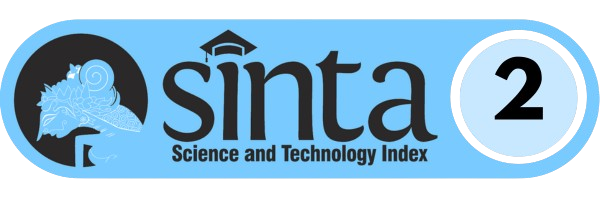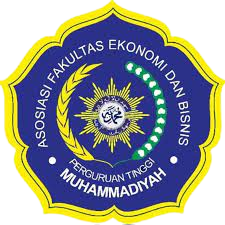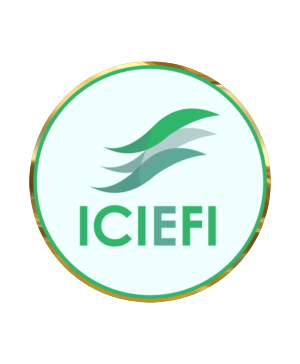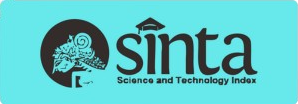Determinants of Household Energy Poverty Status in Eastern Indonesia: A Multinomial Logistic Regression Analysis
DOI:
https://doi.org/10.24269/ekuilibrium.v20i2.2025.pp424-440Keywords:
Energy Poverty, Multinomial Logit, Eastern Region of IndonesiaAbstract
Energy poverty is a complex, multidimensional issue that can hinder sustainable development in many developing nations, including Indonesia. Although the national electrification ratio has improved, gaps in energy access remain, particularly in eastern regions with limited infrastructure. Most prior studies have focused on national trends or developed areas, often relying on single indicators, leaving little detailed analysis for eastern provinces using multidimensional measures and severity levels. This study examines factors influencing household energy poverty in Papua Pegunungan, Papua Tengah, Papua Selatan, and Nusa Tenggara Timur. Data come from the March 2024 Susenas survey, covering 22,989 households. Energy poverty is classified into three levels, and multinomial logistic regression is applied to assess how household characteristics affect the probability of belonging to each level. Findings show that housing size, settlement type (rural/urban), household head’s age, and non-food spending significantly affect energy poverty status. In contrast, education, household size, and household head’s sex have no significant effect. These results point to the need for policies that expand equitable energy infrastructure, improve housing conditions, and ensure affordable, adequate energy access across eastern Indonesia.
References
Abbas, K., Li, S., Xu, D., Baz, K., & Rakhmetova, A. (2020). Do socioeconomic factors determine household multidimensional energy poverty? Empirical evidence from South Asia. Energy Policy, 146, 111754. https://doi.org/10.1016/j.enpol.2020.111754
Acharya, R. H., & Sadath, A. C. (2019). Energy poverty and economic development: Household-level evidence from India. Energy and Buildings, 183, 785–791. https://doi.org/10.1016/j.enbuild.2018.11.047
Adamu, M. B., Adamu, H., Ade, S. M., & Akeh, G. I. (2020). Household energy consumption in Nigeria: A review on the applicability of the energy ladder model. Journal of Applied Sciences and Environmental Management, 24(2), 237–244. https://doi.org/10.4314/jasem.v24i2.7
Akpandjar, G., & Kitchens, C. (2017). From darkness to light: The effect of electrification in Ghana, 2000–2010. Economic Development and Cultural Change, 66(1), 31–54. https://doi.org/10.1086/693707
Akter, T., & Alam, B. M. (2024). Travel mode choice behavior analysis using multinomial logit models towards creating sustainable college campus: a case study of the University of Toledo, Ohio. Frontiers in Future Transportation, 5, 1–17. https://doi.org/10.3389/ffutr.2024.1389614
Apergis, N., & Garcia, C. (2019). Environmentalism in the EU-28 context: the impact of governance quality on environmental energy efficiency. Environmental Science and Pollution Research International, Vol. 26, pp. 37012–37025. https://doi.org/10.1007/s11356-019-06600-1
Aristondo, O., & Onaindia, E. (2018). Counting energy poverty in Spain between 2004 and 2015. Energy Policy, 113, 420–429. https://doi.org/10.1016/j.enpol.2017.11.027
Ashagidigbi, W. M., Babatunde, B. A., Ogunniyi, A. I., Olagunju, K. O., & Omotayo, A. O. (2020). Estimation and determinants of multidimensional energy poverty among households in Nigeria. Sustainability (Switzerland), 12(18), 7332. https://doi.org/10.3390/SU12187332
Ashena, M., & Shahpari, G. (2025). Energy poverty and developments in finance, economic complexity and economic conditions. International Journal of Energy Sector Management, 19(1), 201–219. https://doi.org/10.1108/IJESM-03-2024-0031
Boing, A. C., Bertoldi, A. D., Posenato, L. G., & Peres, K. G. (2014). The influence of health expenditures on household impoverishment in Brazil. Revista de Saúde Pública, 48(5), 797–807. https://doi.org/10.1590/S0034-8910.2014048005113
Bouzarovski, S., & Petrova, S. (2015). A global perspective on domestic energy deprivation: Overcoming the energy poverty–fuel poverty binary. Energy Research & Social Science, 10, 31–40. https://doi.org/10.1016/j.erss.2015.06.007
Cahyani, A. D., Nachrowi, N. D., Hartono, D., & Widyawati, D. (2022). Between insufficiency and efficiency: Unraveling households’ electricity usage characteristics of urban and rural Indonesia. Energy for Sustainable Development, 69, 103–117. https://doi.org/10.1016/J.ESD.2022.06.005
Chen, J. J., & Pitt, M. M. (2017). Sources of change in the demand for energy by Indonesian households: 1980–2002. Energy Economics, 61, 147–161. https://doi.org/10.1016/j.eneco.2016.10.025
Chen, K., & Feng, C. (2022). Linking housing conditions and energy poverty: From a perspective of household energy self-restriction. International Journal of Environmental Research and Public Health, 19(14), 8254. https://doi.org/10.3390/ijerph19148254
Cornieti, & Isabelle, S. M. (2023). Indonesia sustainable least-cost electrification-1 (ISLE-1). Indonesia.
Crentsil, A. O., Asuman, D., & Fenny, A. P. (2019). Assessing the determinants and drivers of multidimensional energy poverty in Ghana. Energy Policy, 133, 110884. https://doi.org/10.1016/j.enpol.2019.110884
Dokupilová, D., Stojilovska, A., Palma, P., Gouveia, J. P., Paschalidou, E. G., Barrella, R., … Hamed, T. A. (2024). Exploring energy poverty in urban and rural contexts in the era of climate change: A comparative analysis of European Countries and Israel. Energies, 17(12), 2939. https://doi.org/10.3390/en17122939
Drescher, K., & Janzen, B. (2021). Determinants, persistence, and dynamics of energy poverty: An empirical assessment using German household survey data. Energy Economics, 102, 105433. https://doi.org/10.1016/j.eneco.2021.105433
du Plessis, E. (2022). Multinomial modeling methods: Predicting four decades of international banking crises. Economic Systems, 46(2), 100979. https://doi.org/https://doi.org/10.1016/j.ecosys.2022.100979
Gafa, D. W., & Egbendewe, A. Y. G. (2021). Energy poverty in rural West Africa and its determinants: Evidence from Senegal and Togo. Energy Policy, 156, 112476. https://doi.org/10.1016/j.enpol.2021.112476
Haidar, H. M., Butler, J. W., Lotfi, S., Vo, A.-D. D., Gogolek, P., & McAuley, K. (2025). Modeling of a heat-integrated biomass downdraft gasifier: Estimating key model parameters using experimental data. Energy Conversion and Management, 325, 119372. https://doi.org/10.1016/j.enconman.2024.119372
Hartono, D., Hastuti, S. H., Balya, A. A., & Pramono, W. (2020). Modern energy consumption in Indonesia: Assessment for accessibility and affordability. Energy for Sustainable Development, 57, 57–68. https://doi.org/10.1016/j.esd.2020.05.002
Hasibuan, D. Y., & Nasrudin, R. (2022). Where do energy-poor households live? Empirical evidence from Indonesia. JEJAK, 15(1), 102–113. https://doi.org/10.15294/jejak.v15i1.31290
Heltberg, R. (2004). Fuel switching: Evidence from eight developing countries. Energy Economics, 26(5), 869–887. https://doi.org/10.1016/j.eneco.2004.04.018
Husnah, N., Arafah, W., Santosa, B., & Nindita Radyati, M. R. (2022). Energy policies for poverty alleviation towards sustainable development goals in Indonesia. Journal of Sustainable Development Issues, 1(2), 1–17. https://doi.org/10.56282/jsdi.v1i2.146
IEA. (2017). Energy access outlook 2017. Paris. https://doi.org/10.1787/9789264285569-en
IEA. (2024). Tracking SDG7: The energy progress report 2024. Washington DC.
Indriany, S., Widyantoro, A., & W, I. W. (2019). Analisis pemilihan moda dengan model multinomial logit untuk perjalanan kerja dari Kota Tangerang Selatan-Dki Jakarta. Portal: Jurnal Teknik Sipil, 10(1), 24. https://doi.org/10.30811/portal.v10i1.972
Jiang, L., Shi, X., Feng, T., & Yan, M. (2024). Age-driven energy poverty in urban household: Evidence from Guangzhou in China. Energy for Sustainable Development, 78, 101369. https://doi.org/10.1016/j.esd.2023.101369
Kalonde, P. K., Austin, A. C., Mandevu, T., Banda, P. J., Banda, A., Stanton, M. C., & Zhou, M. (2023). Determinants of household waste disposal practices and implications for practical community interventions: lessons from Lilongwe. Environmental Research: Infrastructure and Sustainability, 3(1), 011003. https://doi.org/10.1088/2634-4505/acbcec
Khanna, R. A., Li, Y., Mhaisalkar, S., Kumar, M., & Liang, L. J. (2019). Comprehensive energy poverty index: Measuring energy poverty and identifying micro-level solutions in South and Southeast Asia. Energy Policy, 132, 379–391. https://doi.org/10.1016/j.enpol.2019.05.034
Krisianto, A. (2018). Dampak Elektrifikasi Terhadap Pengeluaran Rumah Tangga di Kepulauan Seribu, Jakarta. Jurnal Ekonomi Kuantitatif Terapan, 11(2), 164–173.
Kuhe, A., & Bisu, D. Y. (2019). Influence of situational factors on household’s energy consumption behaviour. International Journal of Energy Sector Management, 14(2), 389–407. https://doi.org/10.1108/IJESM-03-2019-0017
Lehtonen, O., Hiltunen, A. P., Okkonen, L., & Blomqvist, K. (2024). Emerging spatial clusters of energy poverty vulnerability in rural Finland—Byproducts of accumulated regional development. Energy Research and Social Science, 109, 103418. https://doi.org/10.1016/j.erss.2024.103418
Li, Y., Xu, Y., & Sun, W. (2024). Does household electrification alleviate energy poverty? Empirical evidence from China. Energy, 313, 133983. https://doi.org/10.1016/j.energy.2024.133983
Ma, J., & Njangang, H. (2025). The effect of gender inequality in internet access on energy poverty: A preliminary investigation in developing countries. Telecommunications Policy, 102959. https://doi.org/10.1016/j.telpol.2025.102959
Malik, M. Z., Noureen, T., Mehmood, A., & Ghauri, A. (2024). Household energy poverty in the context of socioeconomic status and area of residence: A comparison of Central and Southern Punjab. IRASD Journal of Economics, 6(3), 677–693. https://doi.org/10.52131/joe.2024.0603.0232`677
Manasi, B., & Mukhopadhyay, J. P. (2024). Definition, measurement and determinants of energy poverty: Empirical evidence from Indian households. Energy for Sustainable Development, 79, 101383. https://doi.org/10.1016/j.esd.2024.101383
Maniriho, A. (2024). Examining the effects of wealth, education, and household location on clean cooking energy poverty among rural households in Rwanda. Journal of Poverty, 1–28. https://doi.org/10.1080/10875549.2024.2379782
Masera, O. R., Saatkamp, B. D., & Kammen, D. M. (2000). From linear fuel switching to multiple cooking strategies: A critique and alternative to the energy ladder model. World Development, 28(12), 2083–2103. https://doi.org/10.1016/S0305-750X(00)00076-0
Middlemiss, L., & Gillard, R. (2015). Fuel poverty from the bottom-up: Characterising household energy vulnerability through the lived experience of the fuel poor. Energy Research & Social Science, 6, 146–154. https://doi.org/10.1016/j.erss.2015.02.001
Moniruzzaman, M., & Day, R. (2020). Gendered energy poverty and energy justice in rural Bangladesh. Energy Policy, 144, 111554. https://doi.org/10.1016/j.enpol.2020.111554
Nibbering, D. (2024). A high-dimensional multinomial logit model. Journal of Applied Econometrics, 39(3), 481–497. https://doi.org/10.1002/jae.3034
Ogwumike, F. O., & Ozughalu, U. M. (2016). Analysis of energy poverty and its implications for sustainable development in Nigeria. Environment and Development Economics, 21(3), 273–290. https://doi.org/10.1017/S1355770X15000236
Okyere, M. A., & Lin, B. (2023). Invisible among the vulnerable: a nuanced perspective of energy poverty at the intersection of gender and disability in South Africa. Humanities and Social Sciences Communications, 10(1), 227. https://doi.org/10.1057/s41599-023-01604-2
Olaide, A., Akande, S. O., Sanusi, A., & Mohammed, N. (2018). Determinant of energy poverty in Rafi Local Government Area Of Niger State, Nigeria. International Journal of Innovative Research and Advanced Studies (IJIRAS), (1), 213.
Piekut, M. (2021). Between poverty and energy satisfaction in polish households run by people aged 60 and older. Energies, 14(19), 6032. https://doi.org/10.3390/en14196032
Ray, M., & Chakraborty, B. (2019). Impact of evolving technology on collaborative energy access scaling. Renewable and Sustainable Energy Reviews, 110, 13–27. https://doi.org/10.1016/j.rser.2019.04.051
Riva, M., Kingunza Makasi, S., O’Sullivan, K. C., Das, R. R., Dufresne, P., Kaiser, D., & Breau, S. (2023). Energy poverty: an overlooked determinant of health and climate resilience in Canada. Canadian Journal of Public Health, 114(3), 422–431. https://doi.org/10.17269/s41997-023-00741-0
Sambodo, M. T., & Novandra, R. (2019). The state of energy poverty in Indonesia and its impact on welfare. Energy Policy, 132, 113–121. https://doi.org/10.1016/j.enpol.2019.05.029
Saputri, N. K., Setyonugroho, L. D., & Hartono, D. (2024). Exploring the determinants of energy poverty in Indonesia’s households: empirical evidence from the 2015–2019 SUSENAS. Humanities and Social Sciences Communications, 11(1), 60. https://doi.org/10.1057/s41599-023-02514-z
Septiani, Y., Sugiharti, R. R., Panjawa, J. L., & Izati, I. H. N. (2023). Household energy poverty: Evidence from a large-scale longitudinal survey. Economics Development Analysis Journal, 12(4), 548–562. https://doi.org/https://doi.org/10.15294/edaj.v12i4.74534
Shah, S. K. (2020). Multinomial logistic regression model to identify factors associated with food insecurity in rural households in Nepal. Nepalese Journal of Statistics, 4, 17–32. https://doi.org/10.3126/njs.v4i0.33448
Shareef, A. A., Ajeel, S. M., & Hashem, H. A. (2024). Utilizing multinomial logistic regression for determining the factors influenching blood pressure. Science Journal of University of Zakho, 12(3), 367–374. https://doi.org/10.25271/sjuoz.2024.12.3.1322
Sharma, S. V., Han, P., & Sharma, V. K. (2019). Socio-economic determinants of energy poverty amongst Indian households: A case study of Mumbai. Energy Policy, 132, 1184–1190. https://doi.org/10.1016/j.enpol.2019.06.068
Shen, B., Ma, W., & Li, J. (2025). Role of gender in determining energy poverty, clean energy access, and energy expenditure: Insights from rural China. Energy Economics, 144, 108369. https://doi.org/10.1016/j.eneco.2025.108369
Siksnelyte-Butkiene, I., Streimikiene, D., Lekavicius, V., & Balezentis, T. (2021). Energy poverty indicators: A systematic literature review and comprehensive analysis of integrity. Sustainable Cities and Society, 67, 102756. https://doi.org/10.1016/j.scs.2021.102756
Simcock, N., Jenkins, K. E. H., Lacey-Barnacle, M., Martiskainen, M., Mattioli, G., & Hopkins, D. (2021). Identifying double energy vulnerability: A systematic and narrative review of groups at-risk of energy and transport poverty in the global north. Energy Research & Social Science, 82, 102351. https://doi.org/10.1016/j.erss.2021.102351
Taye, A., Assefa, E., & Simane, B. (2024). Analysis of practices and factors of solid waste management among urban households of Addis Ababa city, Ethiopia. Environmental Challenges, 14, 100811. https://doi.org/10.1016/j.envc.2023.100811
Treiber, M. U., Grimsby, L. K., & Aune, J. B. (2015). Reducing energy poverty through increasing choice of fuels and stoves in Kenya: Complementing the multiple fuel model. Energy for Sustainable Development, 27, 54–62. https://doi.org/10.1016/j.esd.2015.04.004
van der Kroon, B., Brouwer, R., & van Beukering, P. J. H. (2013). The energy ladder: Theoretical myth or empirical truth? Results from a meta-analysis. Renewable and Sustainable Energy Reviews, 20, 504–513. https://doi.org/10.1016/j.rser.2012.11.045
Wojewódzka-Wiewiórska, A., Dudek, H., & Ostasiewicz, K. (2024). Household energy poverty in European Union Countries: A comparative analysis based on objective and subjective indicators. Energies, 17(19), 4889. https://doi.org/10.3390/en17194889
Zahid, M. M., Noureen, T., Mehmood, A., & Ghauri, A. (2024). Household energy poverty in the context of socioeconomic status and area of residence: A comparison of Central and Southern Punjab. IRASD Journal of Economics, 6(3), 677–693. https://doi.org/10.52131/joe.2024.0603.0232`677
Zetara, & Hartono, D. (2024). Energy poverty and subjective wellbeing: Empirical analysis in Indonesia. Jurnal Ekonomi Pembangunan, 21(2), 109–124. https://doi.org/10.29259/jep.v21i2.22576
Downloads
Published
How to Cite
Issue
Section
License

This work is licensed under a Creative Commons Attribution-ShareAlike 4.0 International License.
Retained Rights/Terms and Conditions of Publication
1. As an author you (or your employer or institution) may do the following:
- make copies (print or electronic) of the article for your own personal use, including for your own classroom teaching use;
- make copies and distribute such copies (including through e-mail) of the article to research colleagues, for the personal use by such colleagues (but not commercially or systematically, e.g. via an e-mail list or list server);
- present the article at a meeting or conference and to distribute copies of the article to the delegates attending such meeting;
- for your employer, if the article is a ‘work for hire’, made within the scope of your employment, your employer may use all or part of the information in the article for other intra-company use (e.g. training);
- retain patent and trademark rights and rights to any process, procedure, or article of manufacture described in the article;
- include the article in full or in part in a thesis or dissertation (provided that this is not to be published commercially);
- use the article or any part thereof in a printed compilation of your works, such as collected writings or lecture notes (subsequent to publication of the article in the journal); and prepare other derivative works, to extend the article into book-length form, or to otherwise re-use portions or excerpts in other works, with full acknowledgement of its original publication in the journal;
- may reproduce or authorize others to reproduce the article, material extracted from the article, or derivative works for the author's personal use or for company use, provided that the source and the copyright notice are indicated, the copies are not used in any way that implies RCEPM-LIPI endorsement of a product or service of any employer, and the copies themselves are not offered for sale.
All copies, print or electronic, or other use of the paper or article must include the appropriate bibliographic citation for the article's publication in the journal.
2. Requests from third parties
Although authors are permitted to re-use all or portions of the article in other works, this does not include granting third-party requests for reprinting, republishing, or other types of re-use. Requests for all uses not included above, including the authorization of third parties to reproduce or otherwise use all or part of the article.
3. Author Online Use
- Personal Servers. Authors and/or their employers shall have the right to post the accepted version of articles pre-print version of the article, or revised personal version of the final text of the article (to reflect changes made in the peer review and editing process) on their own personal servers or the servers of their institutions or employers without permission from Universitas Muhamamdiyah Ponorogo, provided that the posted version includes a prominently displayed Universitas Muhamamdiyah Ponorogo copyright notice and, when published, a full citation to the original publication, including a link to the article abstract in the journal homepage. Authors shall not post the final, published versions of their papers;
- Classroom or Internal Training Use. An author is expressly permitted to post any portion of the accepted version of his/her own articles on the author's personal web site or the servers of the author's institution or company in connection with the author's teaching, training, or work responsibilities, provided that the appropriate copyright, credit, and reuse notices appear prominently with the posted material. Examples of permitted uses are lecture materials, course packs, e-reserves, conference presentations, or in-house training courses;
- Electronic Preprints. Before submitting an article to an Ekuilibrium: Jurnal Ilmiah Bidang Ilmu Ekonomi, authors frequently post their manuscripts to their own web site, their employer's site, or to another server that invites constructive comment from colleagues. Upon submission of an article to Ekuilibrium: Jurnal Ilmiah Bidang Ilmu Ekonomi, an author is required to transfer copyright in the article to Economy Faculty Universitas Muhammadiyah Ponorogo, and the author must update any previously posted version of the article with a prominently displayed Economy Faculty Universitas Muhammadiyah Ponorogo copyright notice. Upon publication of an article by the Universitas Muhammadiyah Ponorogo, the author must replace any previously posted electronic versions of the article with either (1) the full citation to the work with a Digital Object Identifier (DOI) or link to the article abstract in Ekuilibrium: Jurnal Ilmiah Bidang Ilmu Ekonomi journal homepage, or (2) the accepted version only (not the final, published version), including the Economy Faculty Universitas Muhammadiyah Ponorogo copyright notice and full citation, with a link to the final, published article in journal homepage.
4. Articles in Press (AiP) service
Economy Faculty Universitas Muhammadiyah Ponorogo may choose to publish an abstract or portions of the paper before we publish it in the journal. Please contact our Production department immediately if you do not want us to make any such prior publication for any reason, including disclosure of a patentable invention.
5. Author/Employer Rights
If you are employed and prepared the article on a subject within the scope of your employment, the copyright in the article belongs to your employer as a work-for-hire. In that case, Economy Faculty Universitas Muhammadiyah Ponorogo assumes that when you sign this Form, you are authorized to do so by your employer and that your employer has consented to the transfer of copyright, to the representation and warranty of publication rights, and to all other terms and conditions of this Form. If such authorization and consent has not been given to you, an authorized representative of your employer should sign this Form as the Author.
6. RCEPM-LIPI Copyright Ownership
It is the formal policy of Economy Faculty Universitas Muhammadiyah Ponorogo to own the copyrights to all copyrightable material in its technical publications and to the individual contributions contained therein, in order to protect the interests of the Economy Faculty Universitas Muhammadiyah Ponorogo, its authors and their employers, and, at the same time, to facilitate the appropriate re-use of this material by others. Economy Faculty Universitas Muhammadiyah Ponorogo distributes its technical publications throughout the world and does so by various means such as hard copy, microfiche, microfilm, and electronic media. It also abstracts and may translate its publications, and articles contained therein, for inclusion in various compendiums, collective works, databases and similar publication.
7. Licensing Terms
Ekuilibrium is licensed under a Creative Commons Attribution-ShareAlike 4.0 International License.
Permissions beyond the scope of this license may be available at https://journal.umpo.ac.id/











